Practicing piano scales – four advanced exercises
Today’s article expands on the two previous posts regarding technical practice methods (How to practice Hanon Exercises and Improving piano scales) by introducing four advanced exercises for practicing piano scales.
The word ‘advanced exercise’ is not used here because only more advanced pianists will be able to benefit from them, but because the initial effort needed to learn how to use them is quite considerable. All four exercises can produce advanced results even when practiced by an amateur.
The exercises are presented below in no particular order, so feel free to take any direction you like.
Practicing piano scales starting from any note
The concept of this exercise is rather simple. The four examples below present the D major piano scale starting from D, E, F# and G note. The fingering needs to remain consistent with the typical fingering used for D major scale. If you are accustomed to a different fingering pattern (compared with the one given below), please continue using the one acquired through your prior learning.
Traditionally, in practicing scales and arpeggios, four notes are assigned to each beat/measure. What makes this particular exercise challenging is the shift of accentuation between various sets of fingers, caused by starting the scale from each consecutive note.
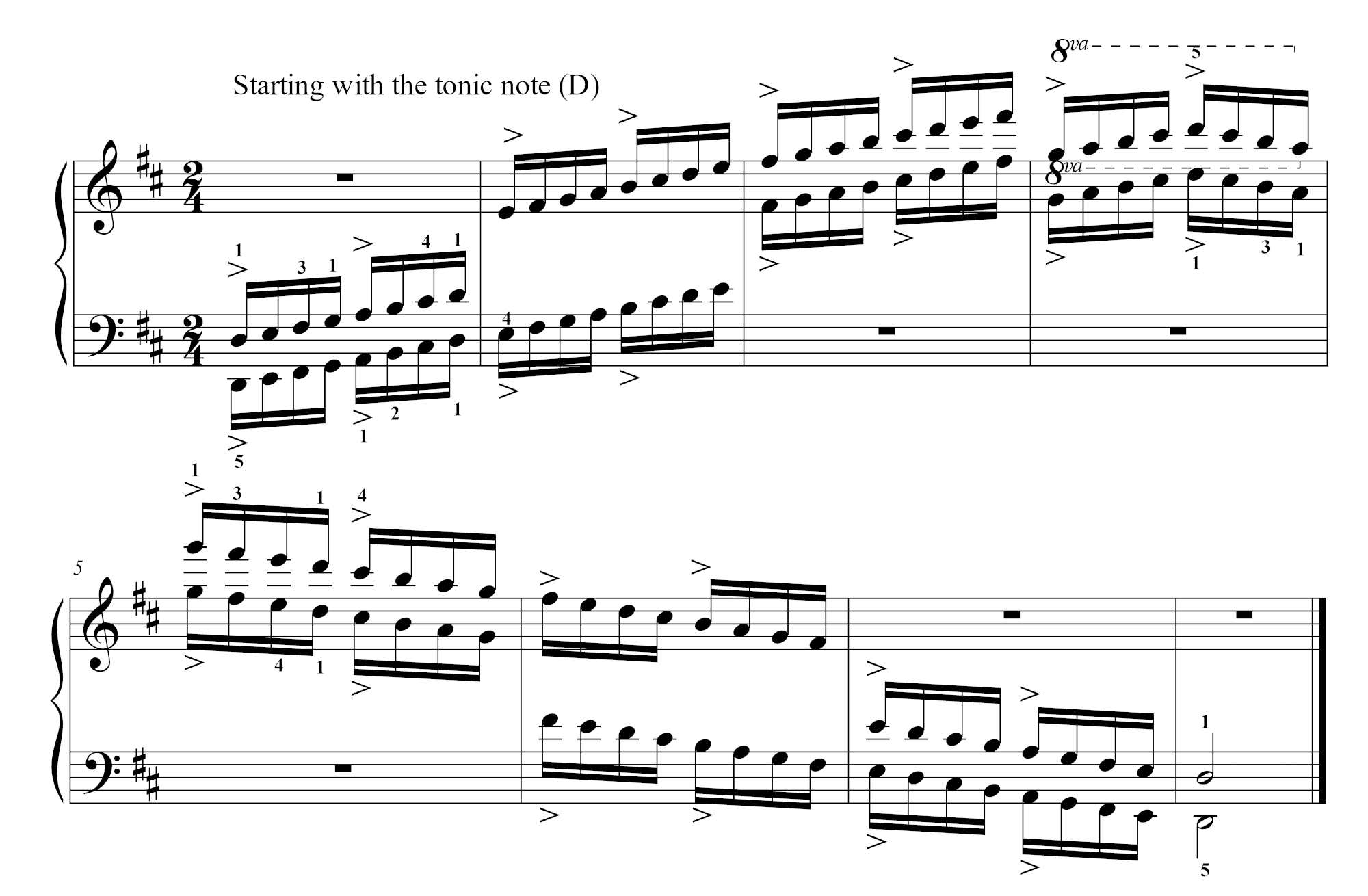
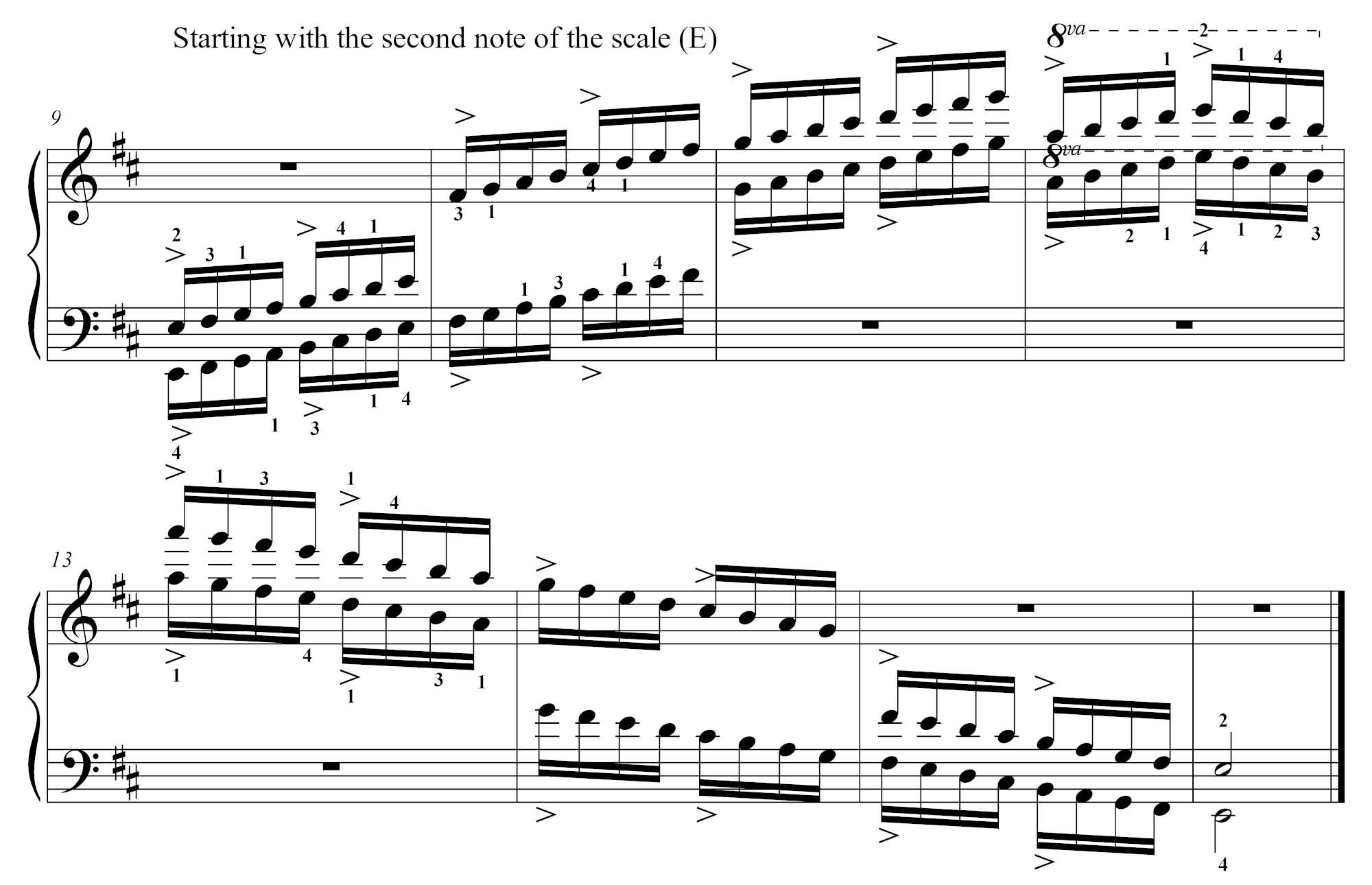
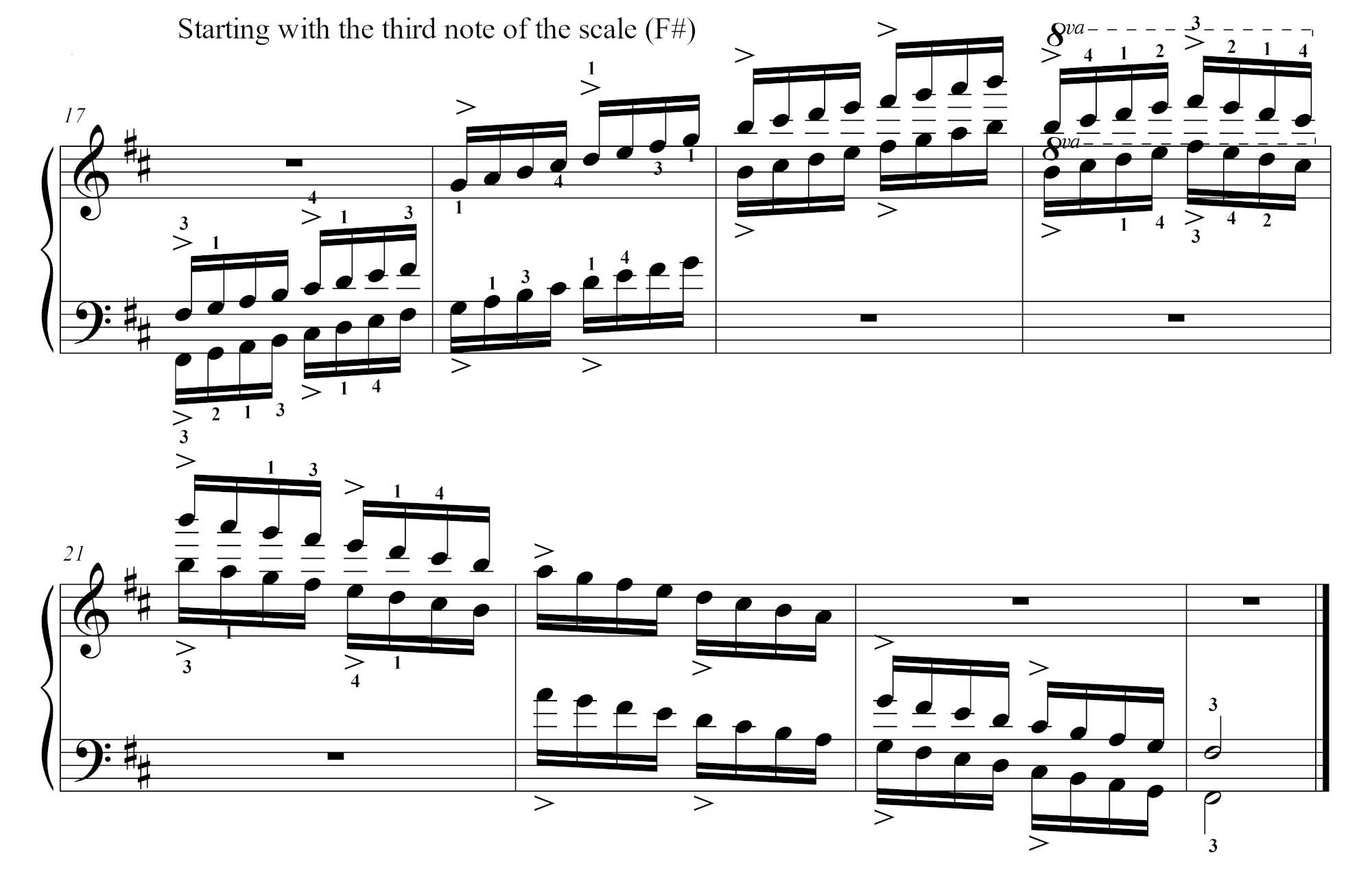
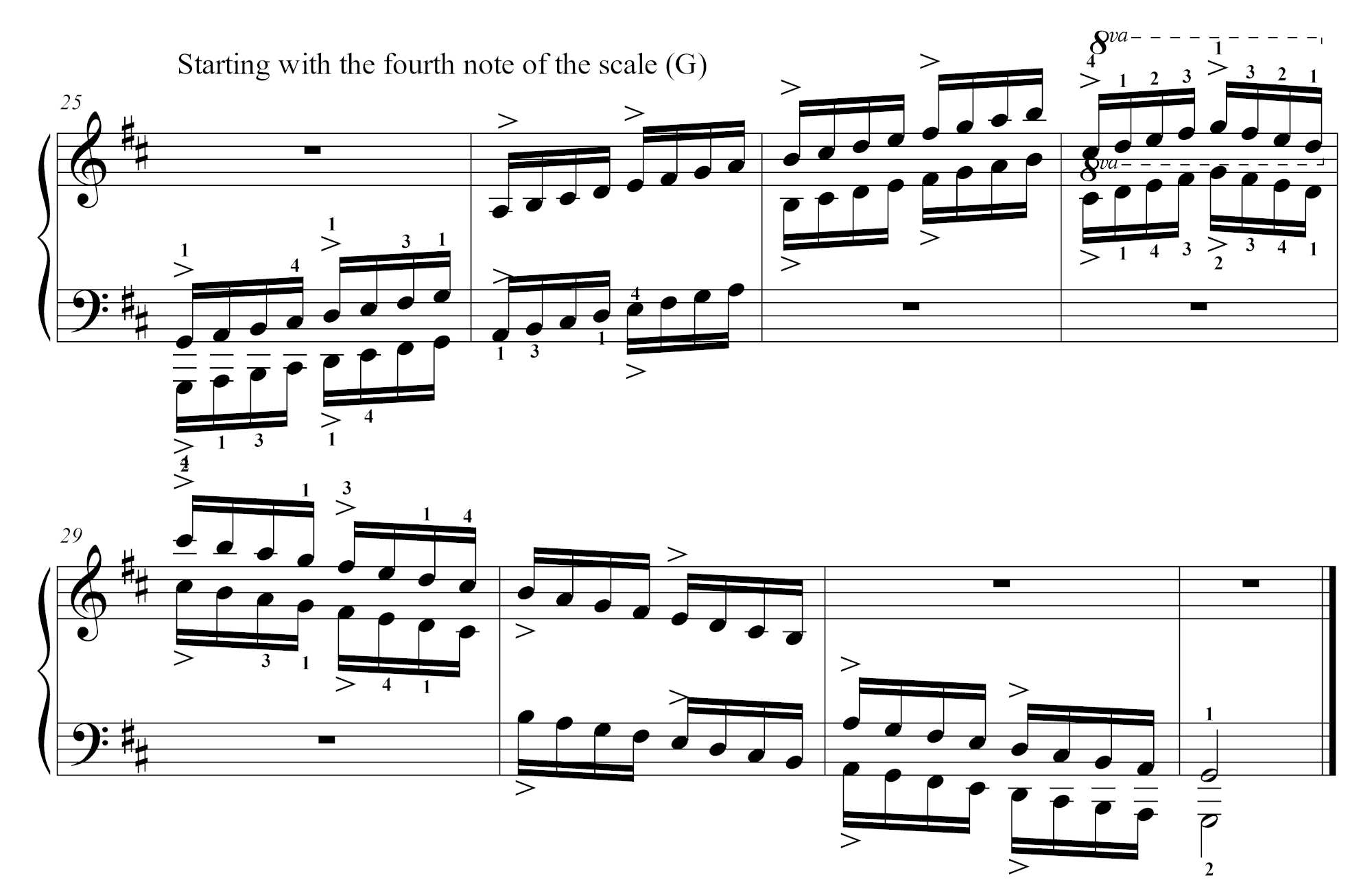
The main benefit of such practice is a better understanding of keyboard topology (map of the keyboard, hand positions, fingering patterns). Thanks to this exercise, the choice of fingering will be more automatic during sight-reading as our brain can immediately find the correct fingering for the scale, regardless of its starting note.
Here is the PDF file of the D major piano scale containing this exercise (starting with all seven steps of the scale).
Speed up your thinking – an advanced exercise of aiming for the tonic note
In the very fast tempo (180bps and beyond), it is often easier to focus and aim for each consecutive tonic note, rather than try to subdivide a scale into traditional groups of four notes per measure/beat. The two versions of the same exercise below aim at different execution speeds.
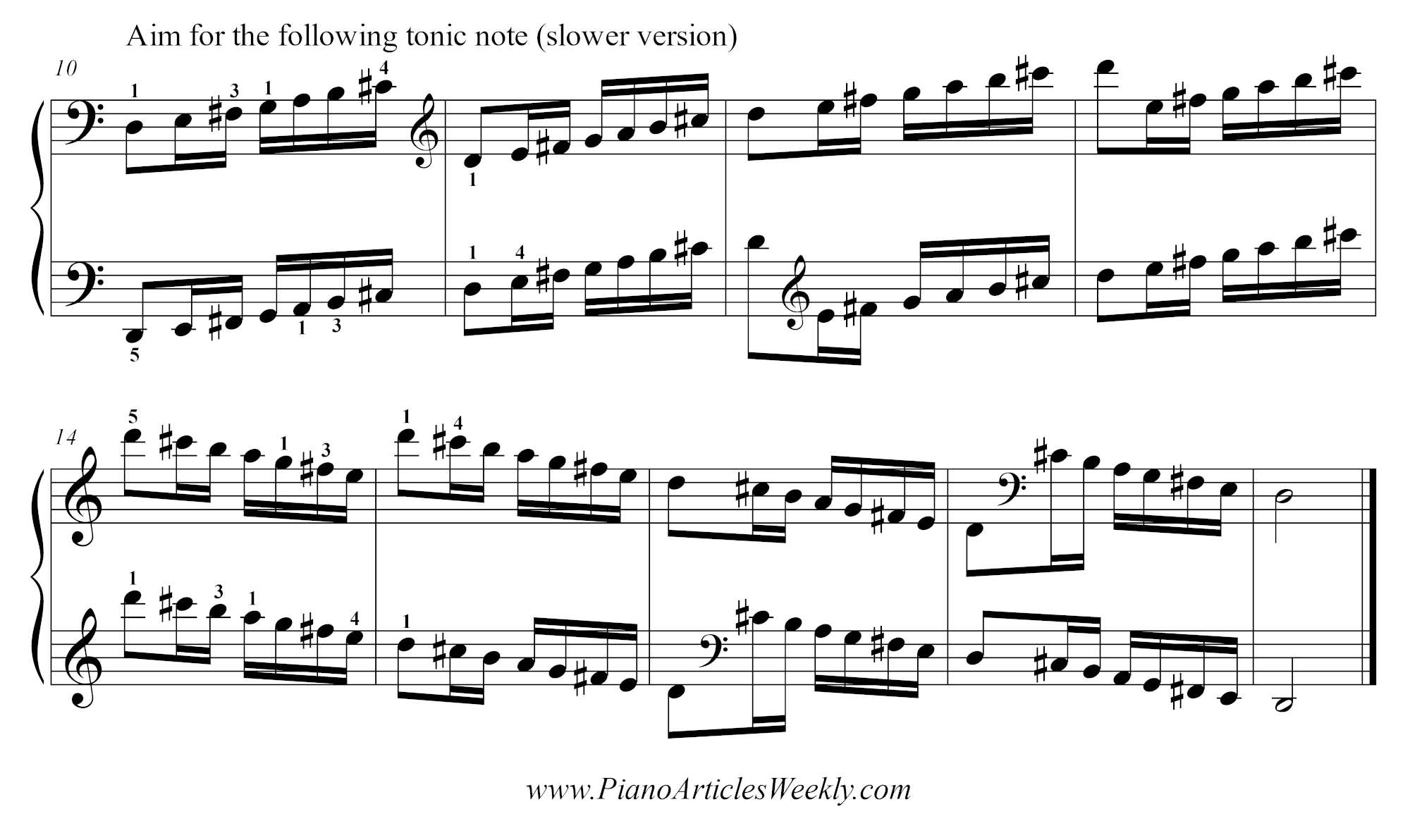
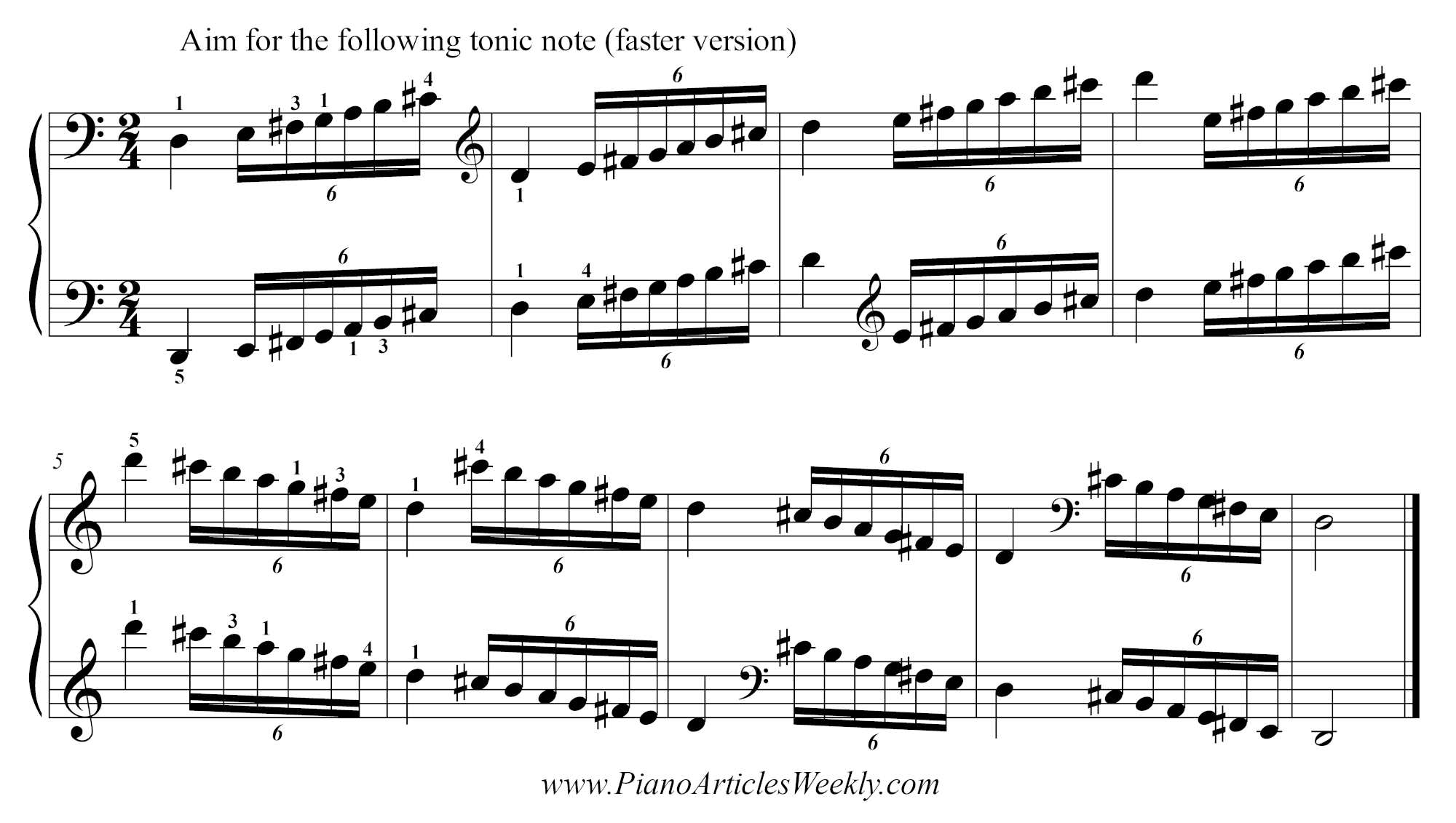
The main benefit of this exercise lies in creating a more manageable approach to piano scales practice, which allows our brain to focus on easy-to-find tonic notes, rather than on always-changing steps of the scale when grouped in four notes per beat.
Advanced exercise – note addition
Sometimes when practicing fast piano scales or passages, it is difficult to detect which finger (or a set of fingers) is the cause of unevenness, stumble, or a wrong note. The exercise in ‘note addition’ helps us find where exactly the problem is.
The exercise is based on a simple idea of starting with two or three initial notes played with a good degree of control and clarity, and after some repetition, adding another note. The two variants presented below show how this exercise can be applied to piano practice by adding notes to the end and to the beginning of the scale.
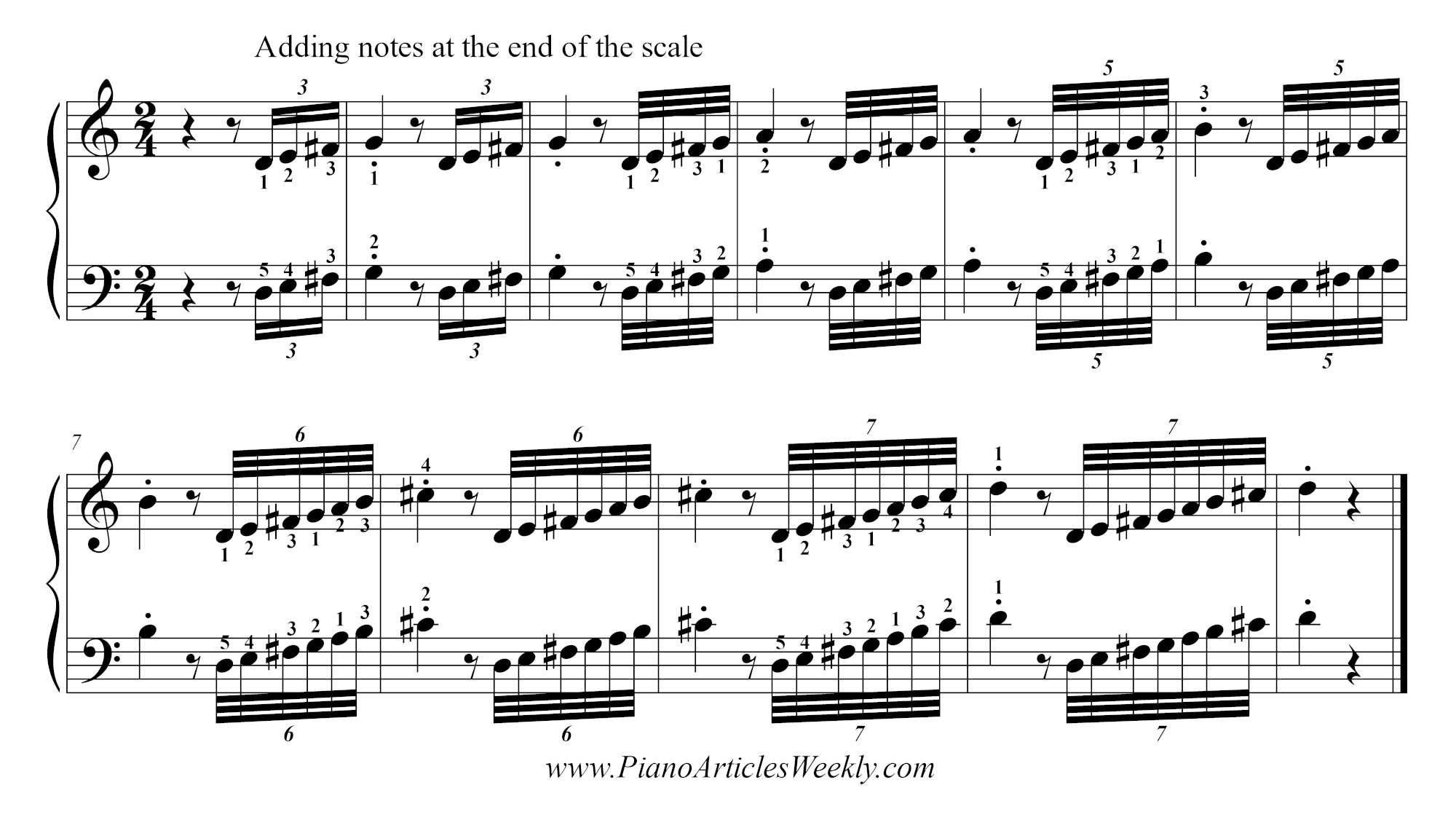
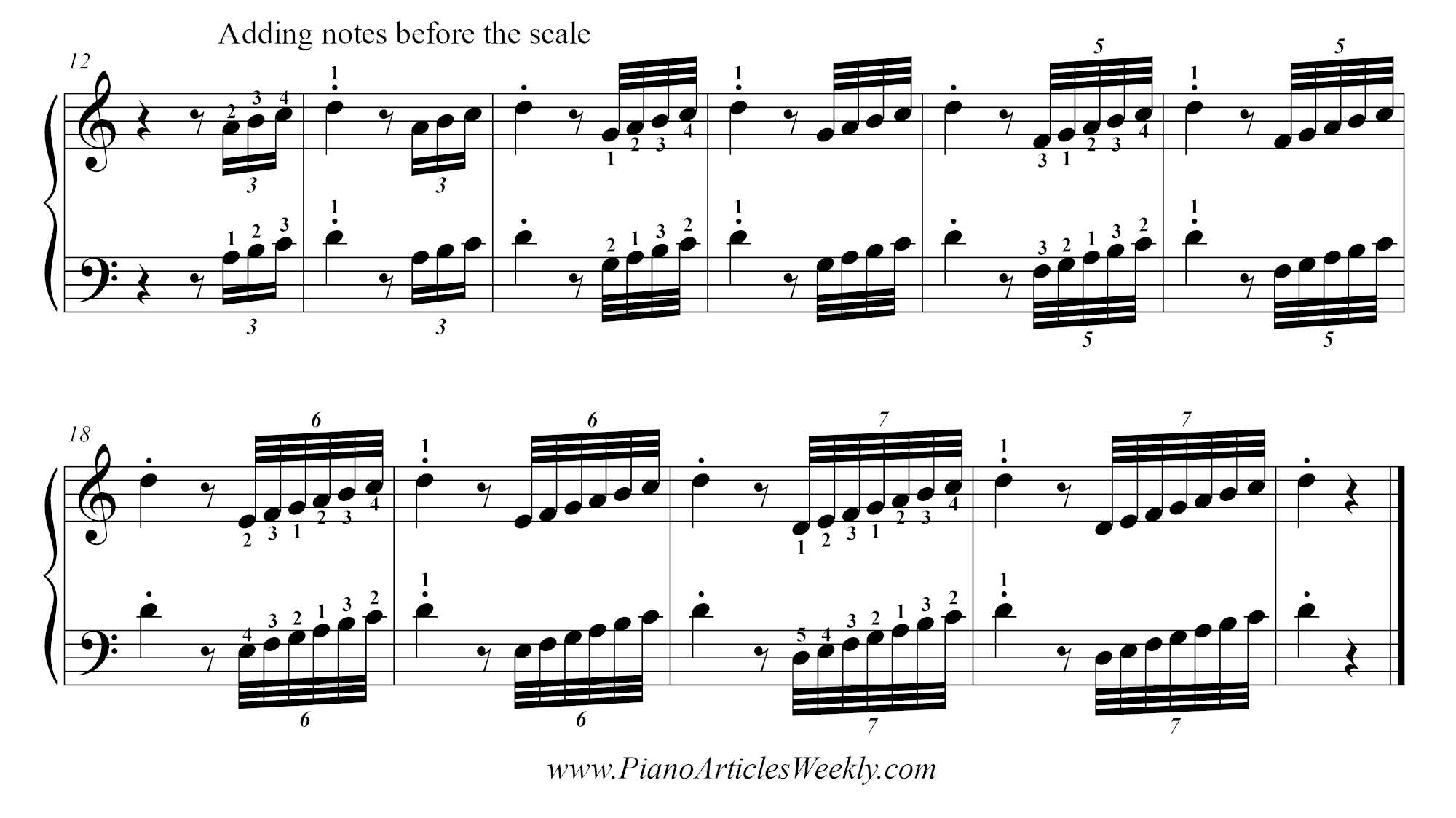
The video below shows an example of practice using the note-addition strategy.
Scales and arpeggios can be practiced this way through four octaves, although two octaves are usually sufficient to see an improvement.
The same exercise can easily be used on difficult passages from the piano repertoire. The example below is a section from Liszt Sonata in B minor, which can easily be practiced using note addition to achieve a satisfying technical outcome.
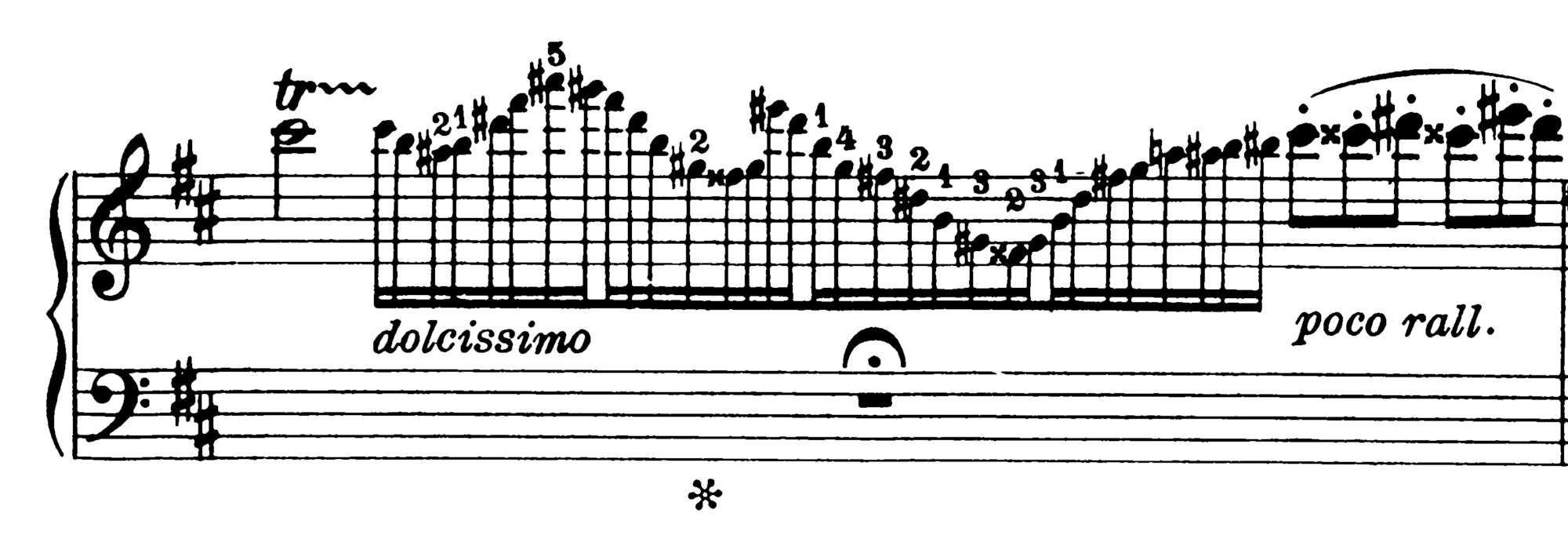
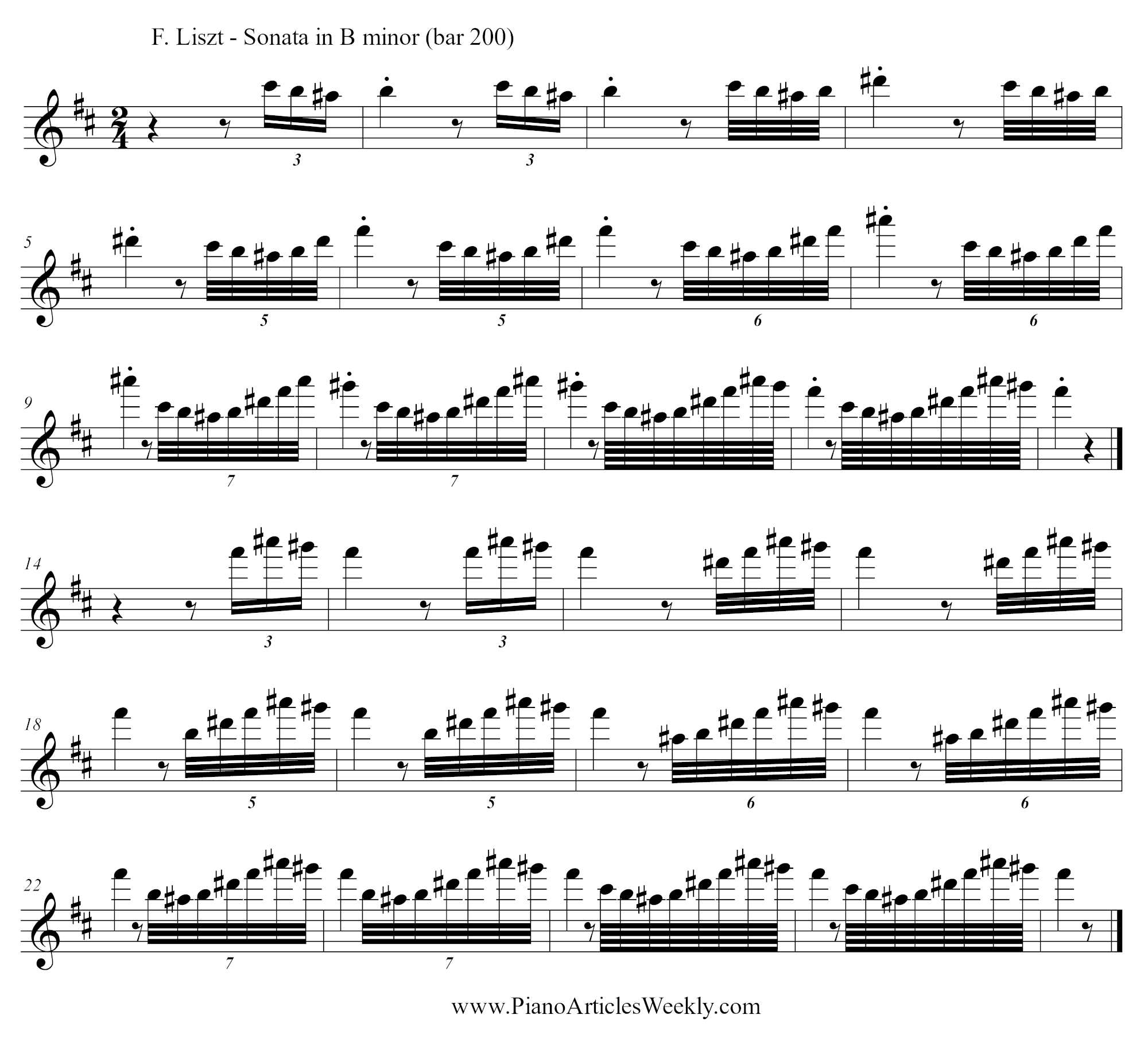
I often chose to practice both ways (working from both ends) to build confidence and to develop a comprehensive technical understanding of the passage in question.
Improving the speed of each metrical group of the piano scale
As with some of the earlier exercises, the fingering in this exercise must remain consistent with the D major piano scale usually used by the performer. By separating each metrical group and mastering its speed and clarity, the tempo of any scale can be raised significantly.
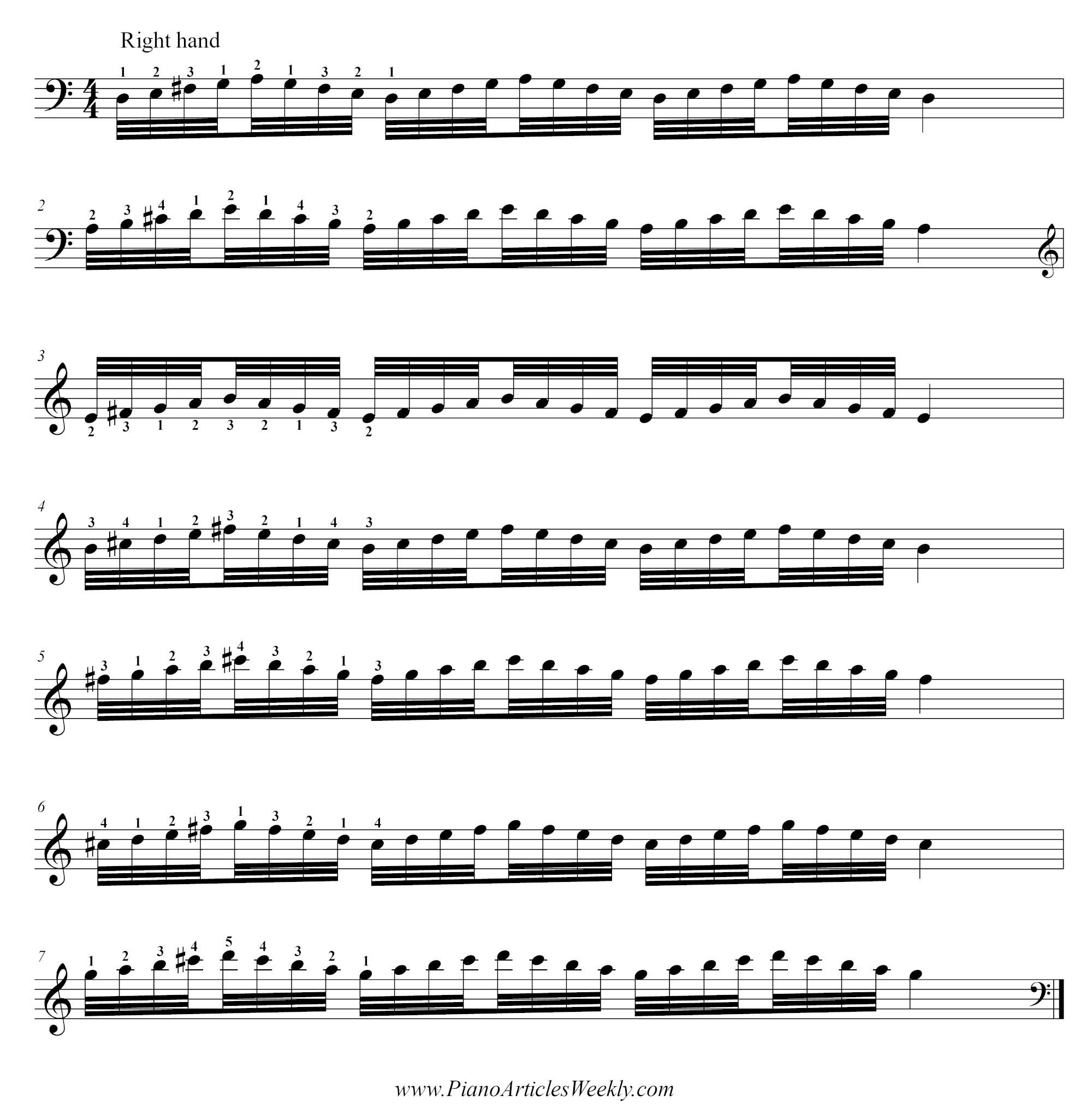
Please note that due to the complexity of fingering of piano scales in various keys, some measures practiced this way will be more challenging to execute than others. If you want to try it for yourself, please play through bar 6 of the exercise above, and compare its speed and precision with other measures of the same exercise.
The left-hand version of this practice method is shown in two examples below.
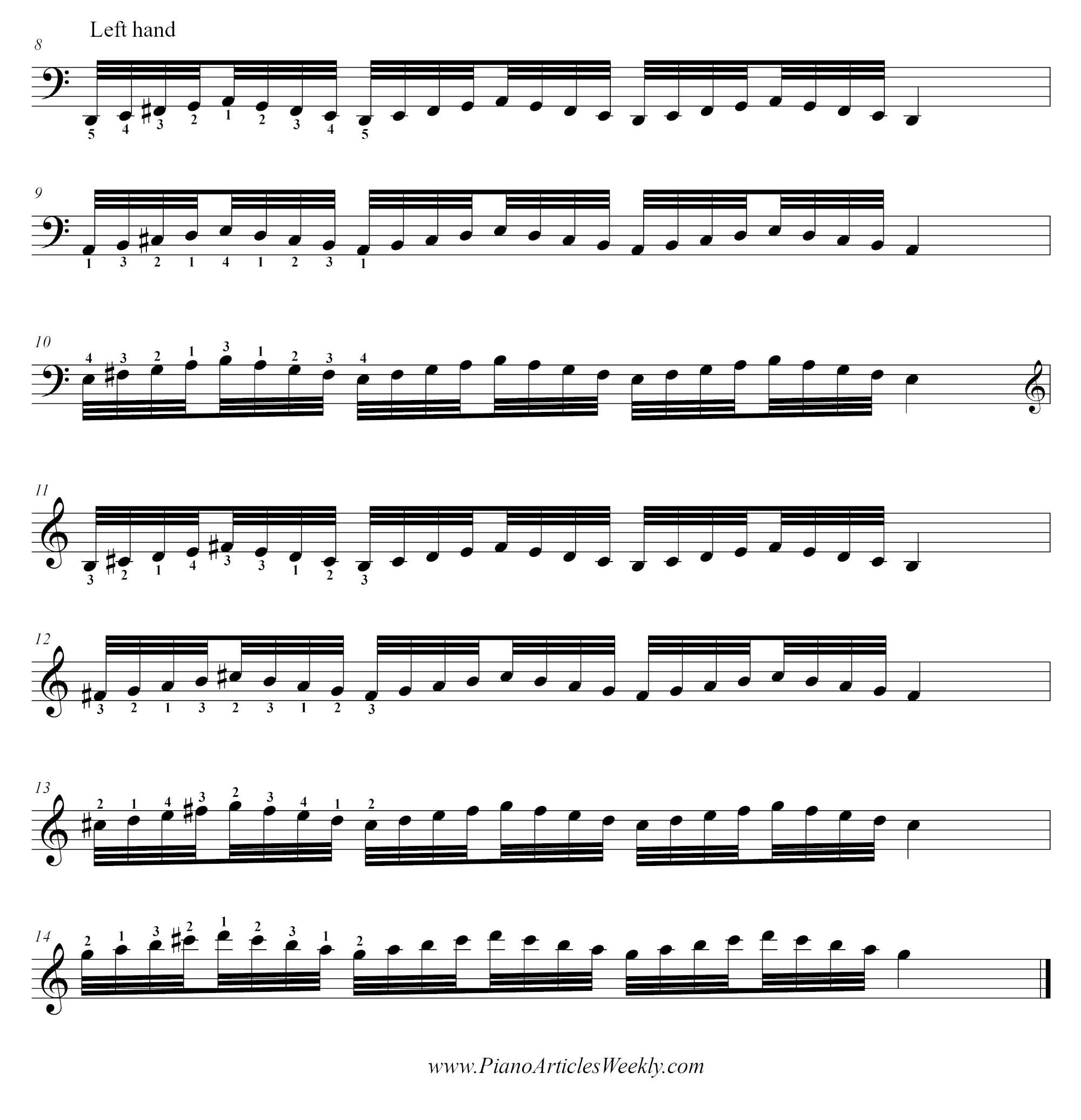
Use a metronome and a good amount of repetition to achieve better fluency.
You can also apply those strategies for practicing piano scales in any key other than D major.
The piano scale exercises presented in today’s article are not new, and although I have learned some of them from my past teachers, I was always wondering about their origins. Recently, I was sent a link to a piano method by Alberto Jonas, called ‘Master School of Modern Piano Playing and Virtuosity‘ (link to www.imslp.org), published in 1922. The wealth of knowledge contained in seven volumes of his writing is staggering. I am currently reading through them, and I will report back on any interesting findings. Many of the included exercises and methods were authored not by Jonas but collected by him from some of the most respected concert pianists of the past. For more ideas on practising scales, please check the Book II of his ‘Master School’.
Please ensure you comply with copyright laws in your country when downloading sheet music from www.imslp.org.
I do hope you enjoyed this article. Practicing piano scales is often considered a cornerstone of daily technical routine, and discovering new and exciting exercises can help you progress faster. If you have any questions or suggestions, please leave a comment below the article.
You can also subscribe to my email list (the subscription form can be found at the bottom of my Home page), to receive notifications about newly published articles.
As always, use the exercises wisely and, if possible, practice them under a supervision of a professional pedagogue.
Happy practising and teaching everyone!
W.
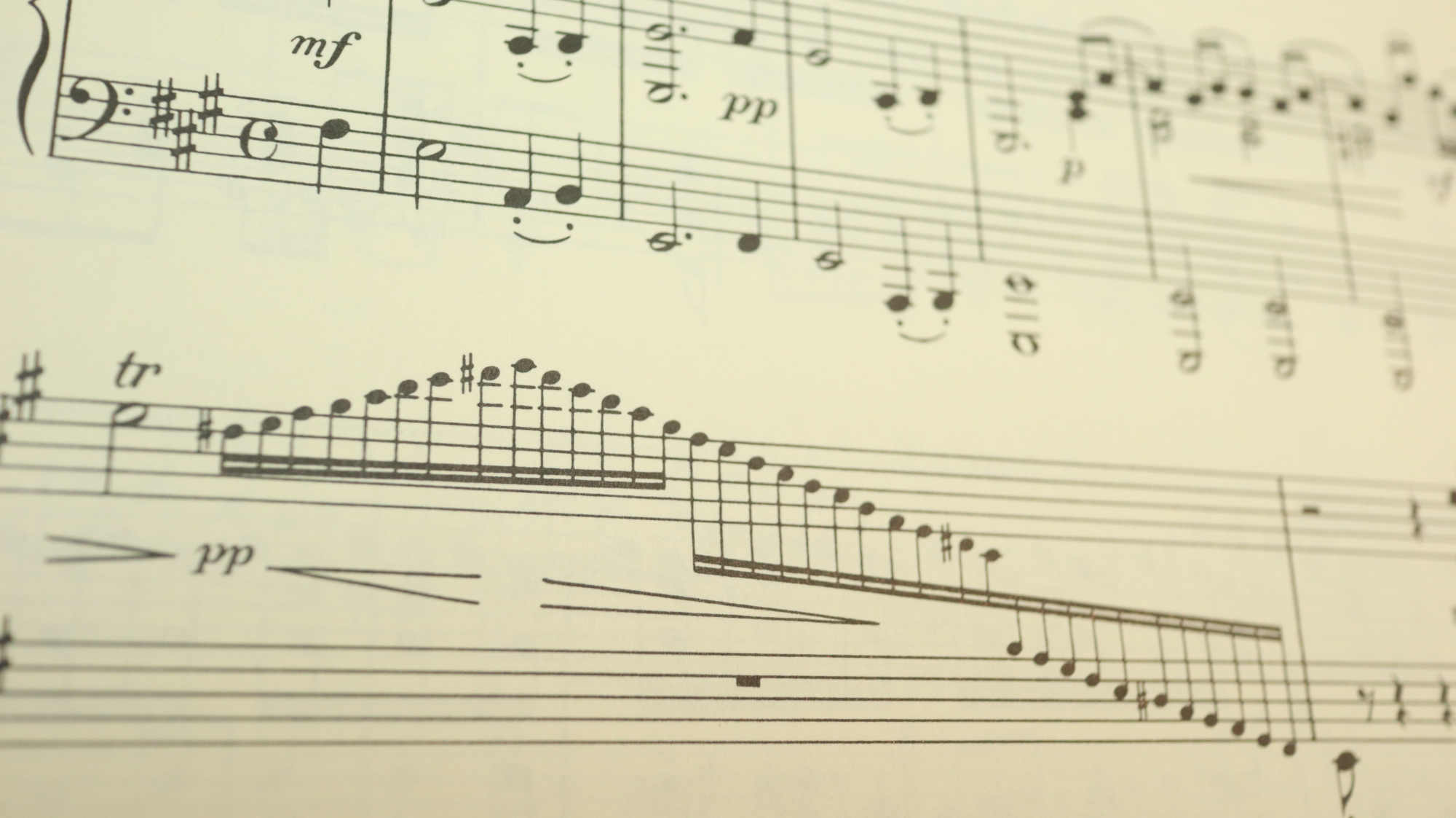
HI,
Searched on Arpeggio practices, and found your website.
Are you planning to offer your pdfs. for practice?
Hanon book 1, 3 are good, but not specific to good practices for Virtuoso piece.
they should be keyed, ! Fingering may be different. And muscle memory must be identical to make great progress.
Czerny, exercises are short, but create muscle memory confusion. Ref. Mozarts brain and the fighter pilot.
Thanks again, and look forward to getting your new exercises